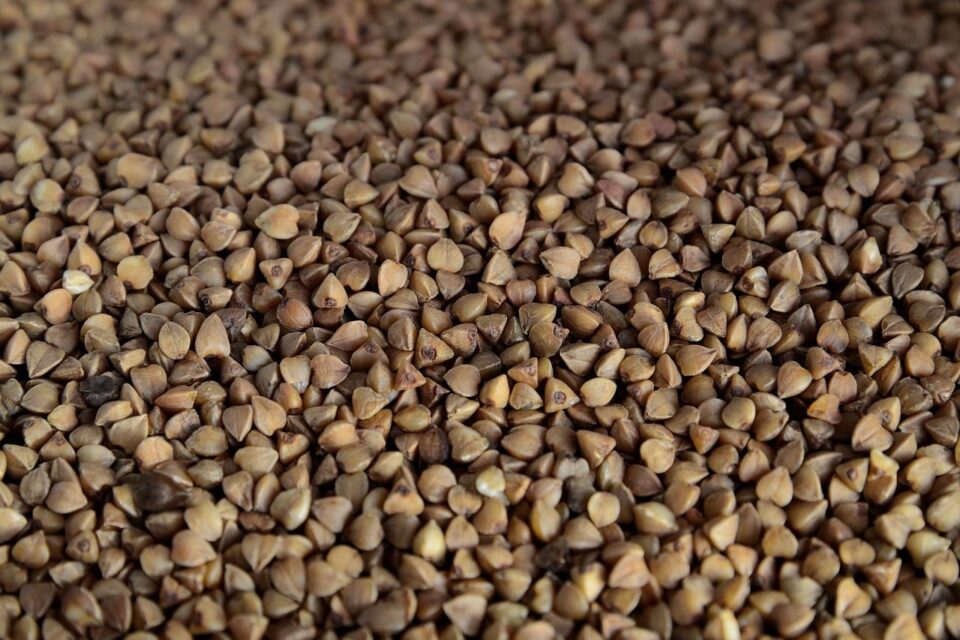Sorghum flour has become a popular ingredient for many recipes, including gluten-free cooking and baking. But there might be times when you want a sorghum flour substitute.
There could be several reasons for a desire to substitute, ranging from availability to trouble sourcing/buying. Even with the increased interest, sorghum flour is still in something of a niche. So, we’ll discuss some sourcing options along with the substitution choices.
While specific substitutions can depend on immediate requirements, conventional substitutes for sorghum flour are millet flour, buckwheat flour, amaranth flour, oat flour, and wheat flours (all purpose flour, whole wheat flour, and others). Other noteworthy options can be rice flour, teff flour, and quinoa flour.
With the basics covered, let’s discuss these sorghum flour substitutes in detail and ideas that make sourcing it easier for you.
Table of Contents
Top Substitutes For Sorghum Flour And Ideas For Sourcing It
1. Look At Jowar Atta/Flour (Sourcing)
This is not a substitution idea, but a sourcing idea. Most of us generally buy sorghum flour from specialty stores or through online shops. And since these are few and far between if the local store stops stocking sorghum flour, sourcing it can be difficult.
Online stores are always available and a useful option for most of us, but they can be significantly more expensive than brick and mortar options for such products.
So, here’s another option for getting your sorghum flour – get jowar atta. This is often available in Indian stores and many Asian stores also carry it. Generally, getting jowar atta can be cheaper than getting sorghum flour.
They’re the same thing!
Jowar atta is the Indian name for sorghum flour. It is sometimes used in Indian cooking and by people who prefer jowar atta over other flours. Sorghum flour has something of a specialty food vibe and can be more expensive. Jowar atta, though technically the same thing, isn’t seen as a specialty food and is cheaper!
Something to watch out for would be gluten, if that’s a concern for you. Sorghum flour (jowar atta) is naturally gluten-free. However, the grain may have been milled on the same machinery that’s used to mill wheat.
While there is no one-size-fits-all answer, it is usually seen that companies milling jowar atta are often less concerned about cross-contamination with wheat or other grains. On the other hand, those selling sorghum flour as a brand are usually more thorough and careful about such situations.
To be fair, most of this is just speculation. A much better approach is to be careful and check labeling to be sure that the flour you’re getting is gluten-free.
2. Millet Flour
Technically speaking, millets are a group of grasses and are amongst the oldest cultivated crops in the world. Even sorghum falls under the category of millets. However, in general culinary terms, millet flour represents flour obtained from pearl millet, which is different from sorghum flour.
Given the similarity in the origins of these grains, it is no surprise that they’re also very similar in culinary uses. Millet flour is very similar to sorghum flour and can work as an excellent substitute.
Much like sorghum, millet flour is naturally gluten-free. It offers a mild nutty flavor with a hint of sweetness and has a fine texture.
Millet flour or pearl millet flour is known as bajra atta in India. If you have Indian stores around you, there’s a chance that it might be available there for a good price.
For most uses, millet flour is the best alternative to sorghum flour. For substitution, you can replace sorghum flour with an equal amount of millet flour.
3. Buckwheat Flour

Buckwheat flour is amongst the most popular alternatives for sorghum flour. The main reasons are that it does a decent job at the substitution and is relatively easier to source and buy.
Interestingly, buckwheat is not related to wheat and isn’t classified as a grain either. Grains generally come from plants classified as grasses, buckwheat is a pseudocereal that comes from the knotweed family of flowering plants. The seeds of the plant are milled into what we know as buckwheat flour.
Point is, as far as origins go, buckwheat is not very closely related to sorghum. However, where flavor, texture, and culinary properties are concerned, buckwheat flour and sorghum flour are closely related.
Buckwheat brings a nuttiness and earthiness that’s similar to sorghum flour, though it has a more robust flavor. This flour is also gluten-free, adding to its substitution characteristics.
When substituting sorghum flour with buckwheat flour, you can use the substitute in a 1:1 (equal) ratio.
4. Teff Flour
Teff flour is a bit rarer to find than some of the other alternative flours listed here, though it is available in some stores or through online shopping. While it has come to find uses as alternative flour, it’s also used somewhat frequently in Ethiopian cuisine.
It has some similarities with sorghum flour that make it a decent choice for use as for the substitution. Although gluten-free, teff flour can sometimes work as a binding agent. While this behavior isn’t like gluten, it works quite well for baked goods and can give them a nice and fluffy texture.
5. Oat Flour
Though not ideal, oat flour is a decent substitute for sorghum flour. It’s basically a good choice when you want an alternative gluten-free flour but can’t get your hands on other, more suitable options. However, this isn’t just a random pick.
Oat flour offers decent texture, has a nutty flavor, and good nutrition, making it an acceptable substitute. It has the advantage of being more readily available and is seen as a nutritious and health-conscious choice.
6. Amaranth Flour
Here’s another decent alternative for sorghum flour, especially if you want a gluten-free option. It works rather well with the taste and texture profile of sorghum flour. However, it has trouble with high temperatures and can break down.
Therefore, if you use amaranth flour for your cooking and baking needs, be sure to carefully manage the temperature. For substituting amaranth flour for sorghum flour, you can take the conventional route and substitute in equal amounts.
7. Wheat Flour
Wheat is amongst the most popular grains in the world and it has been used across cultures and cuisines for cooking. It is often the go-to for many cooking and baking recipes. However, wheat contains gluten and that is one of the reasons why people choose to go with alternative flours like sorghum flour, buckwheat flour, oat flour, etc.
On the other hand, if the presence of gluten is not your concern, you can substitute wheat flour for sorghum flour without any major issues. You can choose to go with your choice from the different types of wheat flour available, including all-purpose flour, whole wheat flour, etc. You might have to make some adjustments to better match the flour of your choice.
Another thing to consider would be starch. Many recipes using alternative flours like sorghum flour use some type of starch to work as a binding agent. With wheat, gluten works as the binding agent and the addition of starch is not required.
8. Other Alternative Flours (Sourcing, Additional Choices, And Blends)
If push comes to shove, you might find yourself looking at other options for alternative flours to work as sorghum flour substitutes. When faced with a choice like this, you might find yourself more interested in picking a gluten-free option and working with that.
For situations like these, here’s a quick list of alternative flours to consider.
Keep in mind, these aren’t necessarily good substitutes. These are simply sorghum flour substitutes to consider when you want a gluten-free pick. With most of these flours, you can expect a notable change in taste or texture. Additional adjustments might be necessary to make the recipe work.
- Corn flour (finely ground cornmeal, not the starch, which is cornflour)
- Rice flour
- Quinoa flour
- Chickpea flour
- Other options that you might see necessary.
Also, it’s not necessary to use a single flour as a substitute. It is often possible to use flour blends made with two or more flours to work as a substitute. This way, a milder flour paired with a flour with a more robust flavor profile can work as a decent substitute where flavor and texture are concerned.
9. Working With Starches (Tips And Ideas; Substitution Clarification)
As I did my research for this article, as one should, I noticed a peculiar pattern in some of the results. Starches were mentioned along with flour substitutes, which could give an incorrect impression to readers.
Generally, when alternative flours like sorghum or other gluten-free alternatives are used, some amount of starch also finds its way to the recipe. The starches here aren’t only thickeners, but also work as binding agents. Many alternative flour recipes that are gluten-free often need starch as a binding agent. This helps with better results and texture in cooking and baking.
Another point of note is that alternative flours are often used as blends with other flours in the mix. The starch plays a big role in keeping the flours together for culinary use.
Therefore, starch is not your substitute for flour. It might, however, find its way into the recipe given other culinary requirements.
Taking The Best Pick From Your Sorghum Flour Substitutes
Now that we have our full discussion on sorghum flour substitutes and the path you can take, things should be somewhat easier to decide. You can choose to go with the substitutes listed above, or make a blend of these options to suit your tastes and needs.
Finally, your choice of alternative will also depend on how interested you are in keeping the cooking gluten-free. Some options might work better than others when these additional characteristics come into play.

